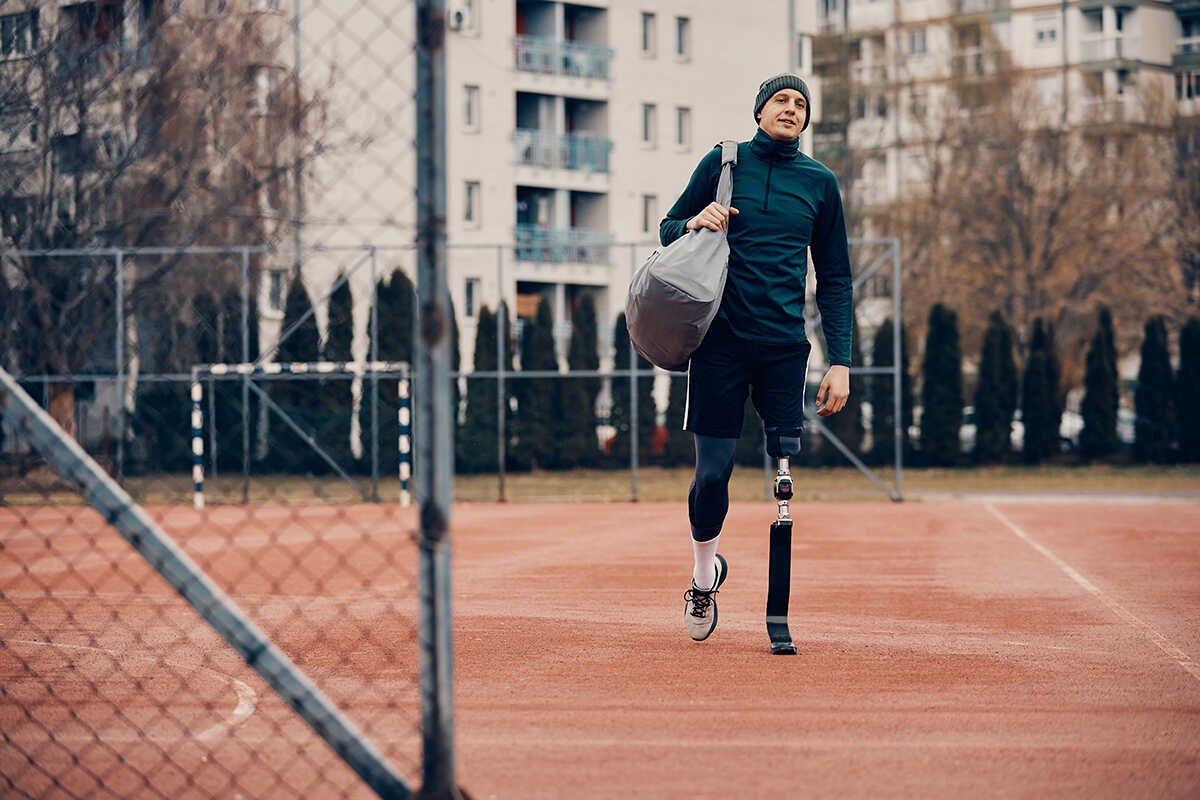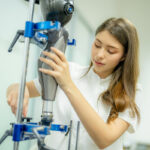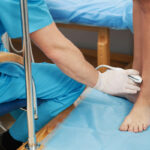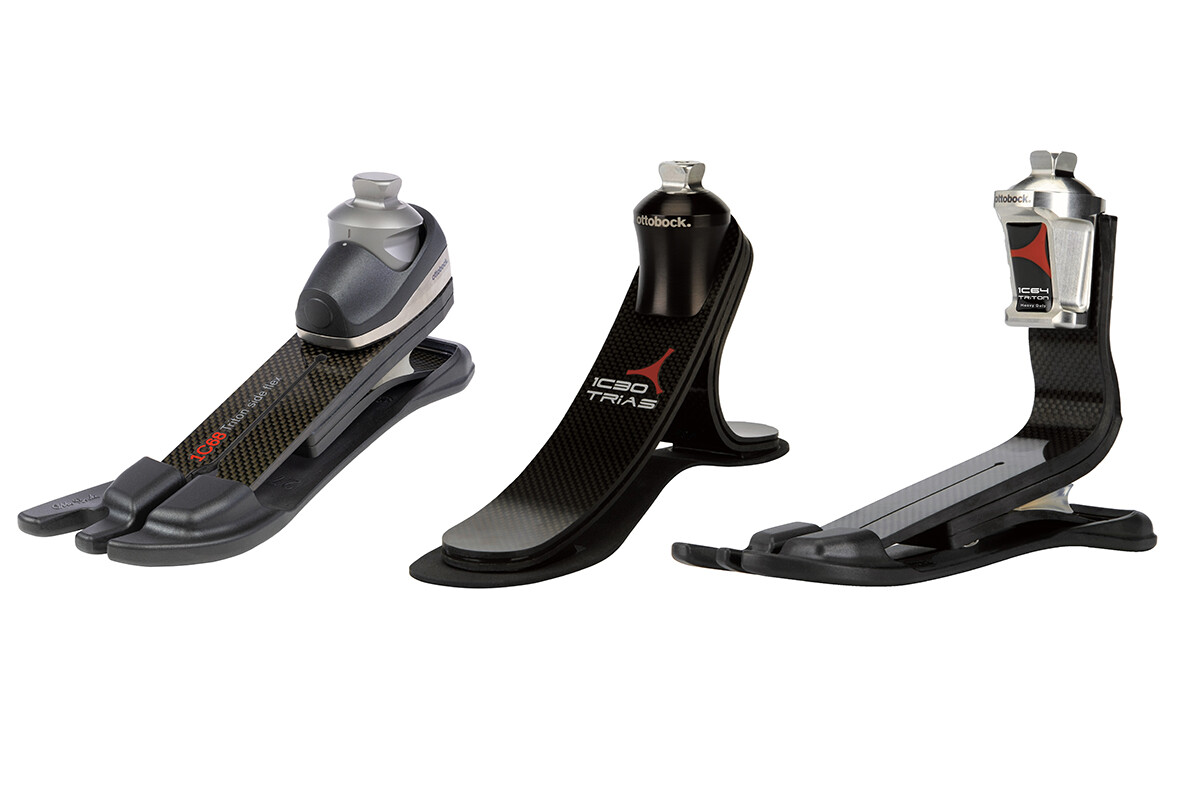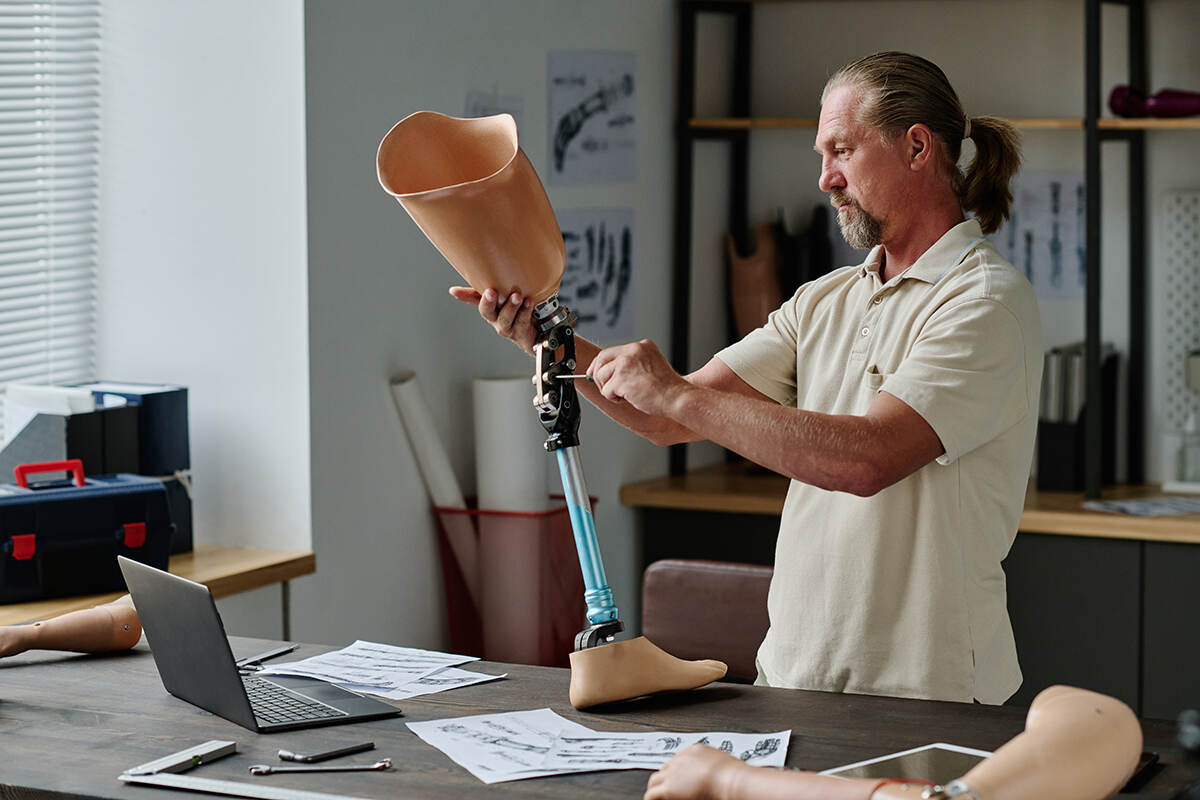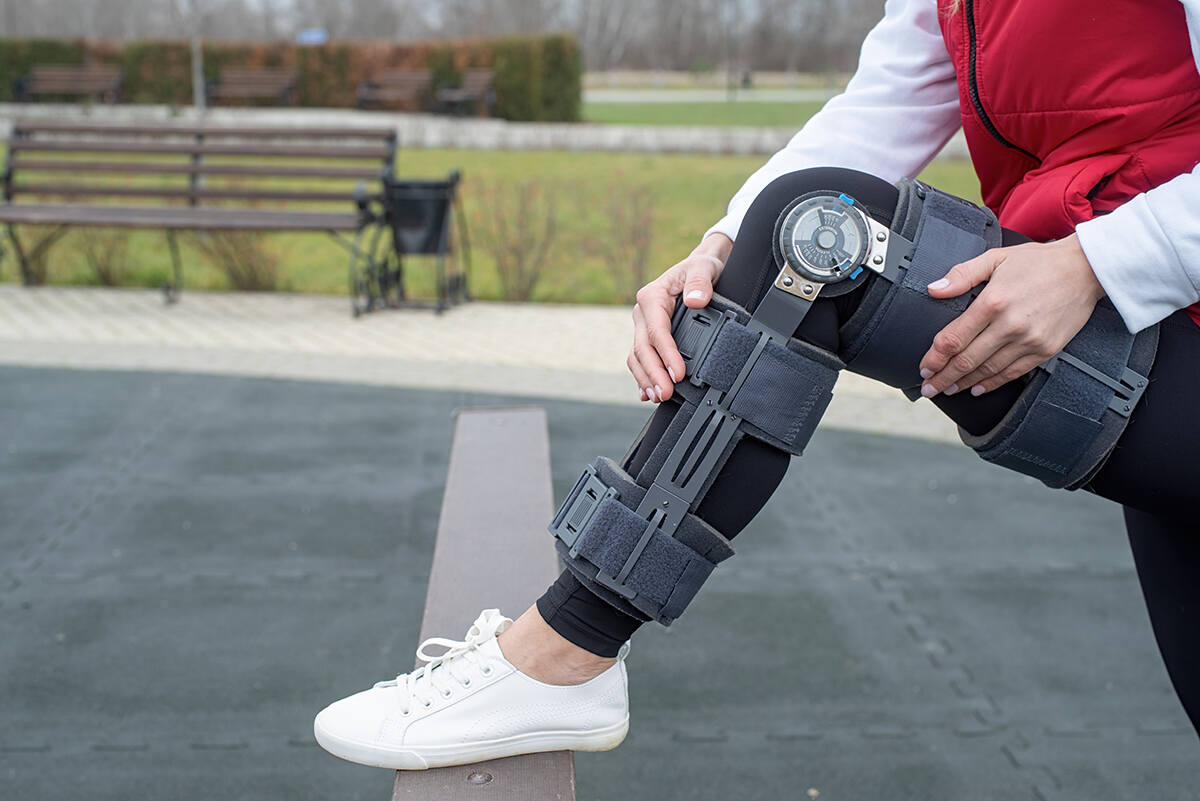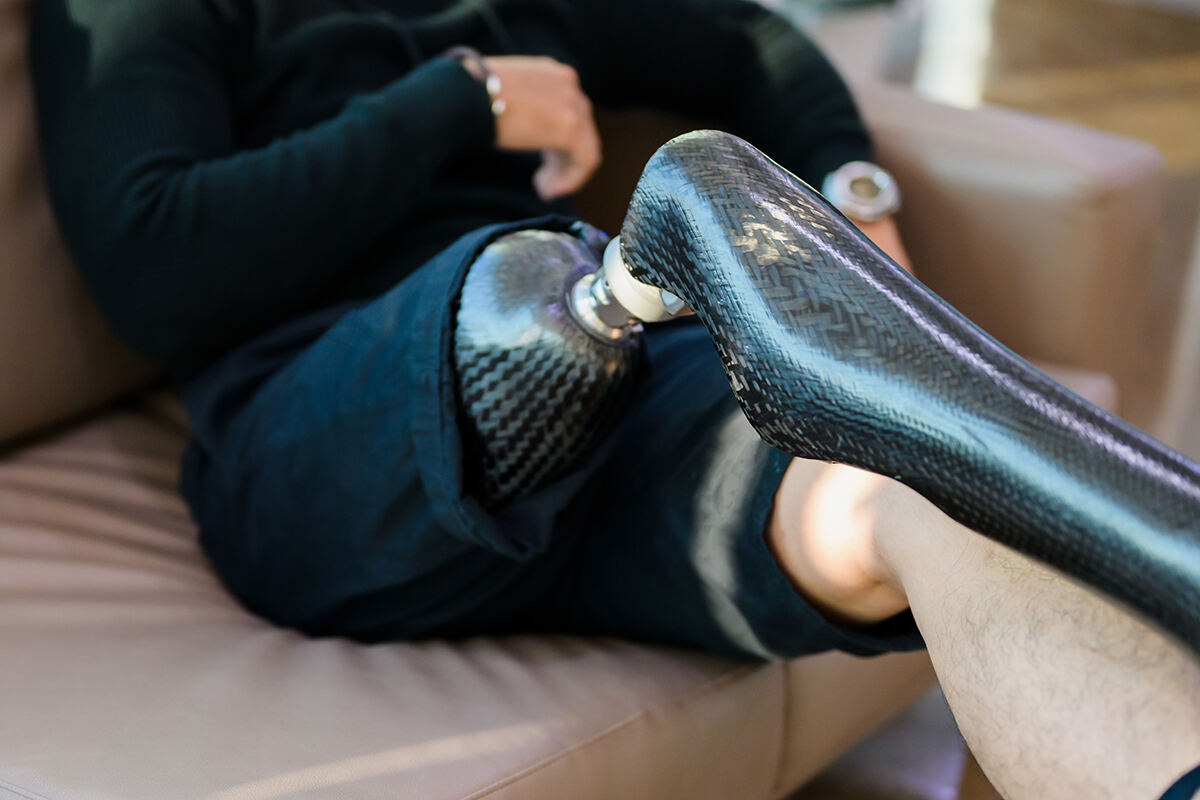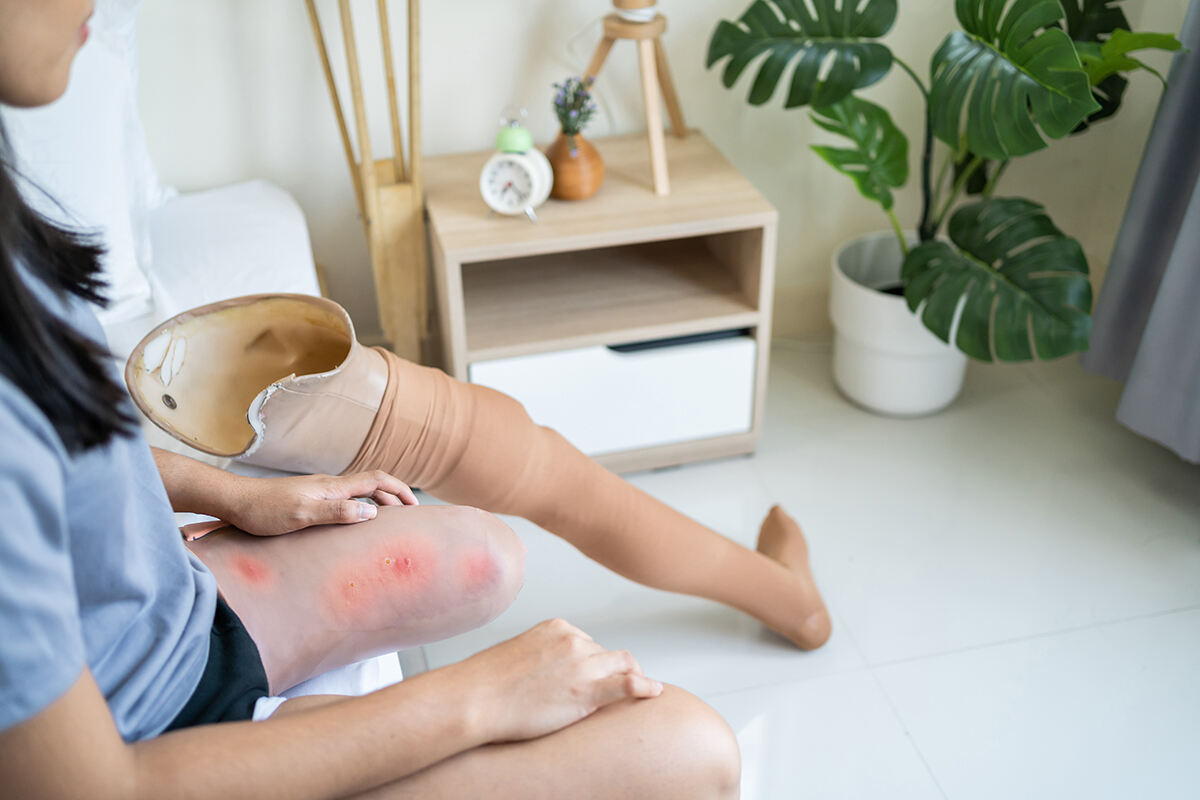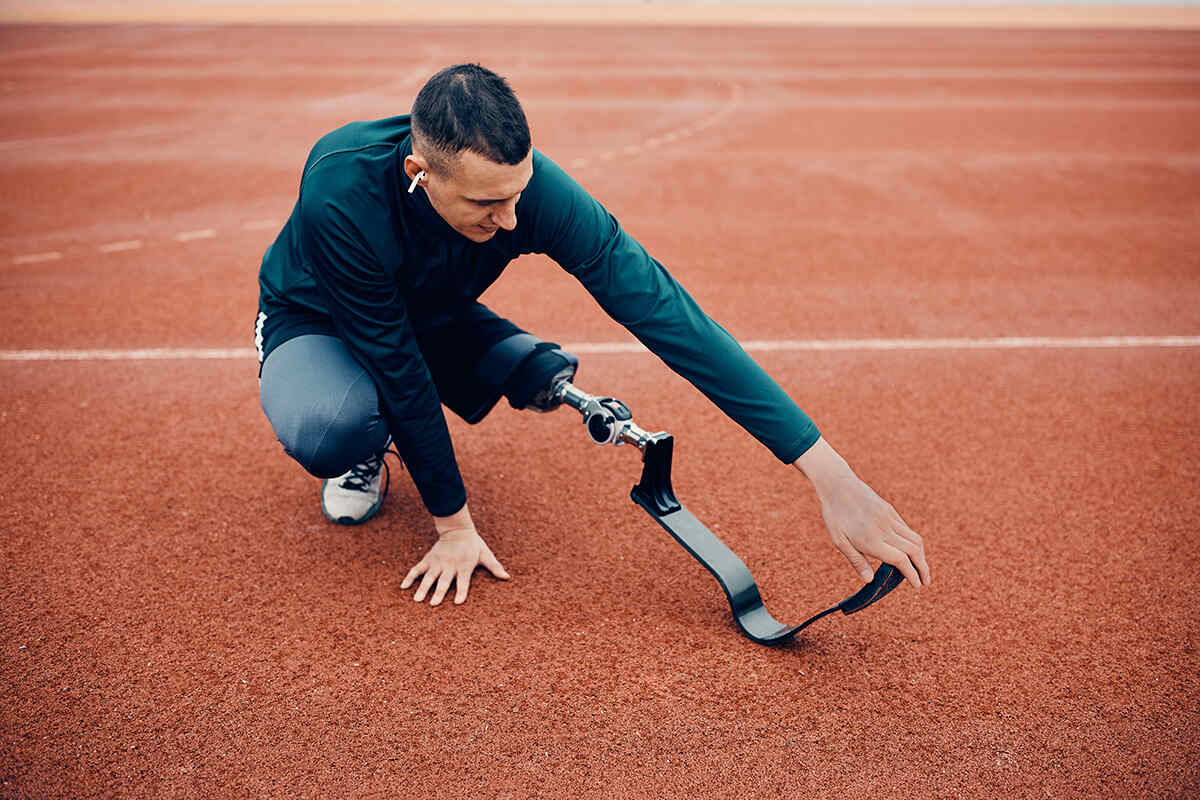Understanding ‘above the knee prosthetics’ is vital for those looking to reclaim their mobility and independence. This concise guide cuts through the complexities, focusing on the essentials of comfort and mobility, and highlighting the innovations shaping today’s prosthetic solutions. Whether you are new to prosthetics or seeking the latest information, here’s what you need to know to make the right choice.
Key Takeaways
- Technological advancements in above knee prosthetics, such as motorized prosthetics and improved socket designs, are enhancing user comfort, functionality, and quality of life.
- Understanding the anatomy of an above knee prosthesis is essential, with components like sockets, pylons, and prosthetic feet tailored for stabilization, energy absorption, and natural gait patterns.
- Customization and the use of advanced tech, such as microprocessor knees and smart implants, are crucial for mimicking natural movement and adapting the prosthetic to the individual’s unique needs.
Exploring Above Knee Prosthetic Leg Solutions
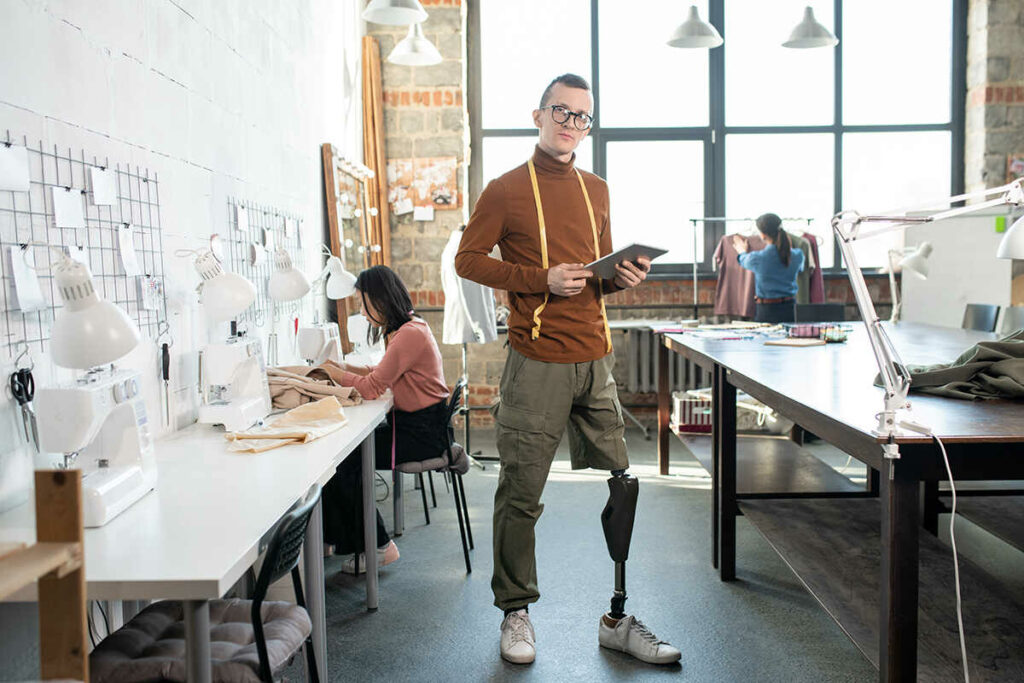
Navigating the world of above knee prosthetic legs can feel daunting, especially given the variety of options and the technological jargon. However, once you understand these options, they can open up a world full of possibilities for comfort and mobility. Today’s prosthetic legs prioritize comfort, efficiency, and lifelike characteristics, including improved ankle joints. The design and technical innovation in above knee prosthetics have brought forth artificial limbs that are more than just an appendage – they are a seamless extension of you.
One of the significant advancements in above knee prosthetic technology includes the development of motorized prosthetics, such as the Utah Bionic Leg by the University of Utah’s Bionic Engineering Lab. The focus on improving the knee joint has led to advanced hydraulic systems such as the KX07 by Blatchford Mobility. These above knee prosthetic legs, particularly those with power capabilities, have the potential to greatly enhance the functional mobility of amputees, ultimately leading to an enhancement in their overall quality of life.
Despite these groundbreaking advancements, the ultimate objective remains user comfort and functionality of the prosthetic leg. This is precisely why the development of alternative socket designs has been prioritized. These designs aim to specifically address comfort-related challenges associated with the standard socket design for transfemoral amputation.
The Anatomy of an Above Knee Prosthesis

Understanding the anatomy of an above knee prosthesis can be empowering. It allows you to be an active participant in your journey, making informed decisions about your prosthetic leg. A typical above knee prosthesis comprises:
- Suspension sleeve
- Socket
- Prosthetic knee
- Pylon
- Prosthetic foot
The socket, specifically an ischial containment socket, aims to provide support and stabilize the femur, creating a bony lock for improved control within the above knee prosthetic legs. The prosthetic knee, on the other hand, provides stability during the initial stance phase of walking and enables flexion while bearing weight just prior to the swing phase.
The components of a prosthetic limb include:
- Socket, which is custom-made to fit the residual limb and provides a secure attachment
- Pylon, which absorbs energy and provides comfort
- Prosthetic foot, which facilitates a natural gait pattern by absorbing shock, generating thrust, and providing balance and support.
Understanding the Role of the Socket in Fit and Comfort
A well-fitted socket can be equated to a perfect pair of shoes; it’s comfortable, supportive, and custom-made for you. The socket in an above knee prosthesis plays a vital role in maintaining the position of the residual limb and ensuring even weight distribution across its surface. This is a key factor contributing to a stable knee.
However, an improperly fitting socket can exacerbate concerns related to the health of the residual limb, resulting in skin breakdown and the development of pressure sores. To avoid this, sockets for above knee prostheses are commonly constructed using modern plastic and silicone for their comfort and adjustability. The socket is tailored to fit the individual by crafting a bespoke sleeve that securely conforms to the end of the residual limb (stump) and connects with the prosthetic device.
Advanced Knee Prosthesis Technology
The field of prosthetics is witnessing an exciting era of technological advancements. With cutting-edge knee prosthesis technology such as robotic joint replacement, and 3D printing, the prospects for improved mobility and natural movement with a prosthetic knee joint have never been more promising.
We will examine two critical aspects of this technological revolution – contrasting mechanical and microprocessor knees, and the significance of customization for natural movement.
Mechanical vs. Microprocessor Knees
When it comes to knee prostheses, one of the key distinctions lies in their operational mechanism – mechanical vs. microprocessor-controlled. Mechanical knee prosthetics operate through mechanical locks, friction, or pneumatic/hydraulic fluids. They offer advantages such as:
- the ability to walk at variable speeds with a more natural gait
- stability
- efficient energy usage
- voluntary control of rotation
- protection against sudden flexion
On the other hand, microprocessor-controlled knee prosthetics are a marvel of modern technology. These prosthetics utilize microprocessors to enable more advanced control, providing:
- Intricate and subtle adjustments for the user’s gait
- Continuous monitoring of the user’s activity
- Dynamic adaptation of the knee’s movements
- Enhanced stability and efficiency of walking
Customization for Natural Movement
Just as no two individuals are the same, no two amputees have the same needs when it comes to their prosthetic legs. This is where customization comes into play. Customization is crucial because it enables the prosthesis to mimic biomechanical functions and facilitates active control of powered joint movements.
The customization process for above knee prosthetics involves:
- Getting precise measurements of the healed residual limb
- Creating a tailored socket based on an impression of the limb using specialized materials
- Ensuring proper fit, comfort, and biomechanical alignment through socket alignment
- Utilizing data from sensors to calibrate the prosthetic knee’s flexion and extension range and speed, aligning it with the individual’s natural gait pattern.
Navigating Amputation and Prosthetic Selection
The path from above knee amputation to selecting a prosthetic can seem daunting. However, with the right knowledge and guidance, you can confidently take this journey. The initial step in obtaining an above knee prosthesis can commence within a few days or weeks post-amputation. It involves creating an impression of the residual limb, followed by fitting the patient with the prosthesis.
When choosing a leg prosthesis, it is important to consider factors such as:
- The level of amputation
- The individual’s goals and activities
- The cost
- The trust in the prosthetic leg
It’s crucial to engage in a discussion about needs and goals with a prosthetist. The level and severity of an amputation can have an impact on the range of prosthetic options available. Cognitive and physical abilities, as well as the presence of any phantom-limb pain, are important factors that can influence the likelihood of prosthetic prescription and selection.
Physical Therapy: Maximizing Prosthetic Potential
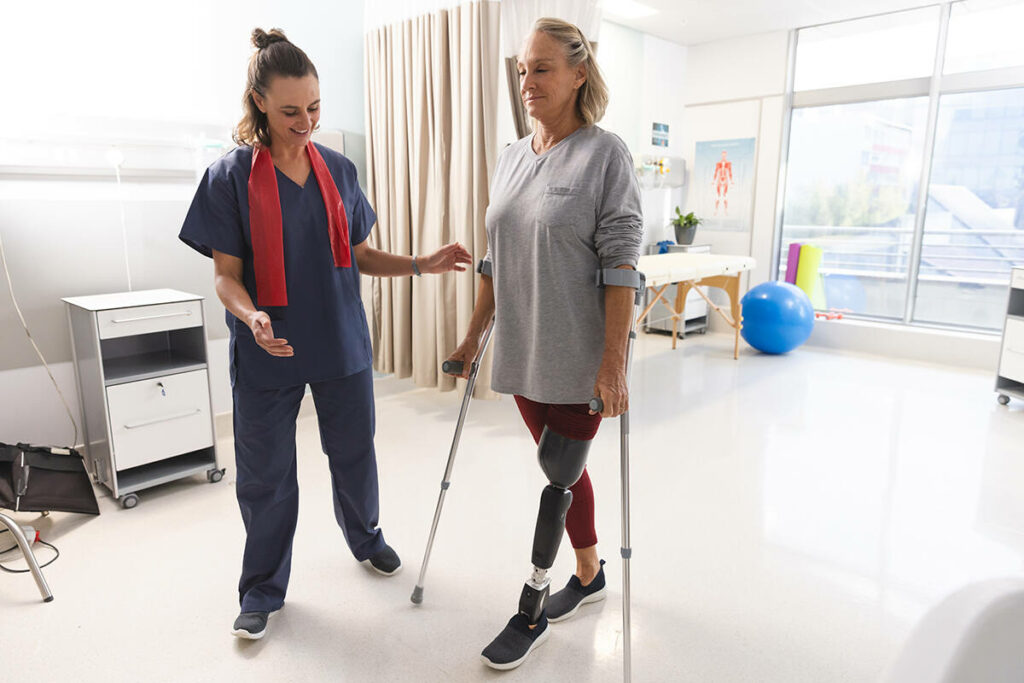
Physical therapy goes beyond regaining strength and mobility; it’s about optimizing the capabilities of your above knee prosthetics. The significance of physical therapy is paramount in assisting amputees in optimizing the capabilities of their above knee prosthetics by enhancing independent function, mastering mobility with assistive devices, and aiding in the development of an efficient gait.
Physical therapy plays a crucial role in facilitating the adaptation of an above knee prosthesis by assisting the amputee in gaining independence and attaining the most efficient gait possible. The adaptation process for an above knee amputee to their prosthesis with physical therapy can extend up to a full year.
A physical therapist plays a crucial role in the post-amputation recovery and rehabilitation process by:
- Designing personalized prostheses
- Modifying artificial limbs
- Collaborating with physical therapists to aid patients in rebuilding muscle strength, flexibility, and coordination
- Providing training on the effective use of the prosthesis
Addressing Phantom Limb Pain After Above Knee Amputations
Many amputees commonly experience phantom limb pain. It is characterized by persistent painful sensations originating from the missing part of the limb. This pain is believed to be attributed to conflicting signals originating from the brain or spinal cord.
Typical symptoms of phantom limb pain in above knee amputees consist of tingling, throbbing, sharp, pins/needles sensations in the limb, as well as burning or aching pain. To manage this pain, a range of non-pharmacological methods can be utilized, including mirror therapy, wearing an elastic stump sock, stump massage, mental imagery of the limb, relaxation techniques, and more.
Lifestyle Adaptations with Above Knee Prosthetics
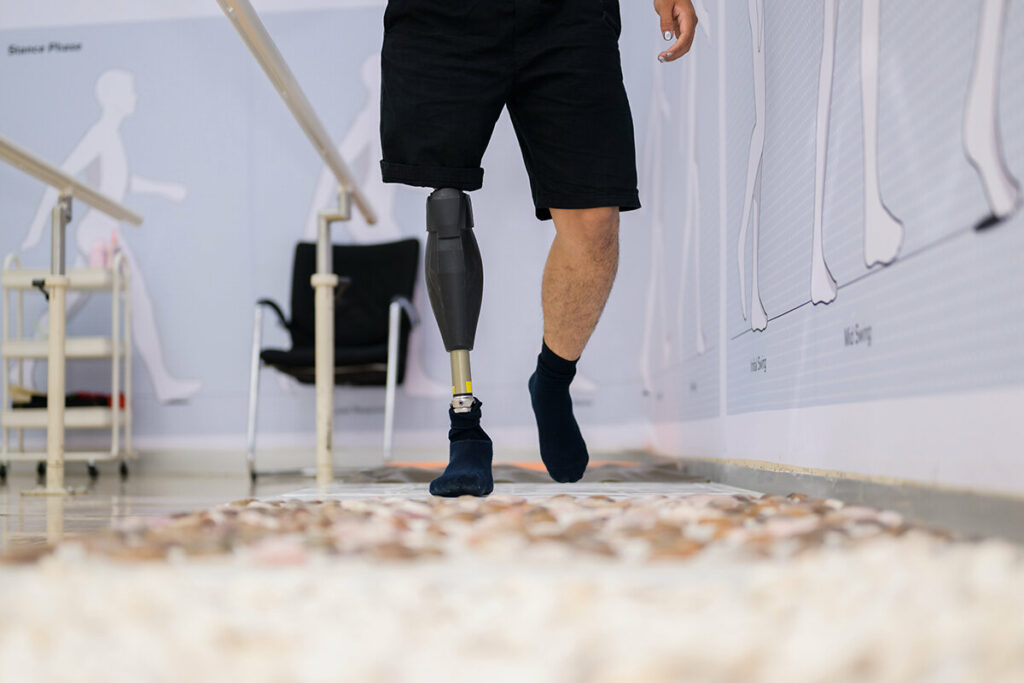
While an above knee prosthetic necessitates some lifestyle adjustments, it doesn’t mean sacrificing your preferred activities. Above knee prosthetics are designed to restore natural leg movements, allowing individuals to perform activities such as walking, climbing stairs, and even running.
Adapting to life with an above knee prosthetic leg involves practicing patience while learning to walk with the prosthetic, maintaining a positive mindset, and attending to self-care at home. With your prosthetic leg, you can engage in sports and recreational activities such as golf, bicycling, kayaking, and various others, including winter sports like skiing.
Troubleshooting Common Issues with Above Knee Prostheses
Similar to any device, you may face challenges with your above knee prosthesis. Typical challenges include:
- Skin abrasion or breakdown
- Skin irritation
- Discomfort due to improper fitting
- Difficulty in finding a comfortable and functional fit.
Improving comfort when adjusting an above knee prosthesis often involves consultation with a prosthetist for the necessary adjustments. Enhancing comfort and control can be achieved by adding socks over the liner or utilizing adjustable components within the prosthesis. To reduce skin irritation caused by a prosthesis, it is important to ensure that the limb remains dry and cool, use moisture-wicking materials, and apply moisturizers or barrier creams to protect the skin.
In the event that the socket becomes loose, it is advisable to consider the use of gel products or additional prosthetic socks as potential solutions to achieve a tighter fit. If you experience discomfort, it is advisable to consider the possibility of a prosthetic infection and to attend to the residual limb by ensuring thorough cleaning with mild soaps and moisturizing.
Choosing Your Prosthetic Partner: The Importance of a Skilled Prosthetist
Selecting the right prosthetic partner holds equal importance as choosing the right prosthetic. A proficient prosthetist not only holds a master’s degree in orthotics and prosthetics but also plays a crucial role in your prosthetic journey, from accurate fitting to ensuring functionality.
When selecting a prosthetist for an above knee prosthesis, it’s important to find a reputable prosthetic provider with expertise in prosthetic limbs. They should be capable of:
- Offering guidance and fitting suitable components tailored to your specific requirements
- Playing a crucial role in the post-amputation recovery and rehabilitation process
- Designing personalized prostheses
- Modifying artificial limbs
- Collaborating with physical therapists to aid patients in rebuilding muscle strength, flexibility, and coordination
- Providing training on the effective use of the prosthesis
Summary
Navigating the world of above knee prosthetics is a journey of discovery, resilience, and adaptability. From understanding the anatomy of an above knee prosthesis to exploring innovative technology and the significance of a skilled prosthetist, every aspect holds the potential to positively transform your life.
Remember, the journey may seem challenging, but with the right prosthetic partner, a well-fitted above knee prosthesis, a dedicated physical therapist, and a positive attitude, you can conquer any hurdle and embrace a life of mobility, comfort, and independence.
Frequently Asked Questions
How much does an above-the-knee prosthetic leg cost?
An above-the-knee prosthetic leg can cost less than $10,000 for a basic model and up to $70,000 or more for a computerized prosthetic.
What are the options for above knee prosthetics?
There are several options for above-the-knee prosthetics, including C-Leg, Genium, X3 knees, Power/Rheo knees and more. These are just some of the different types available for consideration.
How long does it take to walk with above knee prosthetic?
It can take as long as one year to learn to walk with an above knee prosthetic, especially when being fitted for a custom-made full-length prosthetic. The overall process of learning to walk with a prosthetic can be lengthy.
Can you get a prosthetic if your leg is amputated above-the-knee?
Yes, you can get a prosthetic if your leg is amputated above-the-knee. Prosthetic options are available and can provide support for ambulation.
What are the typical challenges individuals face with above knee prostheses?
Individuals with above knee prostheses commonly face challenges such as skin abrasion, irritation, discomfort from improper fitting, and difficulty in finding a comfortable and functional fit. These challenges can significantly impact daily life and mobility. Also the added challenges of walking up and down stairs, in slopes and similar activities in daily life can be tough in the beginning but everything is possible to achieve.


